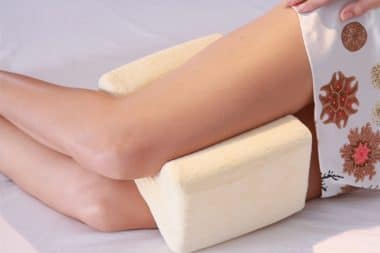Whether you’re an athletic person or not, knowing how to prevent knee injuries is crucial. Knee injuries are perhaps one of the most excruciating injuries you’ll ever experience. Once you have it, the pain will linger until you get yourself completely healed.
According to leading podiatrists such as Foot Doctor, symptoms of knee pain include pain, swelling, stiffness, and weakness in your knees. This type of pain can be agonizing and debilitating, causing you to limit your activities.
There are many effective ways to prevent knee pain, but they all require patience and effort on your part. Here are four ways to prevent knee pain:
1. Strengthen Knee Joints
By strengthening the surrounding cartilage and synovial fluid, you can protect your knee joint from possible injuries. A strong knee joint reduces the risk of knee pain and stiffness. The most common exercises to strengthen these muscles include squatting, walking, running, swimming, and cycling.
Remember not to skip your regular exercises for strengthening your knee joint, even if you have knee problems. Know your limits so that you can avoid pushing yourself too hard that you may end up hurting your knees instead of strengthening them.
If outdoor exercises are not for you, you can always go with strength training. This puts a heavy focus on developing the muscles in the quadriceps and hamstrings. This can help decrease knee pain and help you develop more tolerance against arthritis and other knee problems.
For those who are already suffering from knee problems, you can never go wrong with non-impact aerobic exercises such as working out on a stationary bike, utilizing an elliptical machine, swimming, or practicing water aerobics. It’s advisable to avoid doing activities or exercises that put a lot of stress on the knees such as kneeling, downhill running, or knee bends.
By staying active at all times, you can also control your weight and build muscle. This is essential for protecting your knees from pain and further damage.
2. Stretch Regularly
Regular stretching exercises are excellent in decreasing knee pain, but you may want to add more variations to your daily routine.
For instance, if you are frequently using your knees to hold onto things when working, it’s important to make sure that you have an adequate range of motion when standing or walking. And, if you often have to lift something to get into the best sitting position, it’s also wise to make sure that you have enough strength behind the knees to keep yourself from slipping.
Stretches that focus on the hamstring, calf, and quadriceps are great for taking the pressure off from our knees and kneecaps. Regular stretching can help our body become more flexible and conditioned–hence reducing the risk of developing further knee complications.
There are plenty of simple stretches that you can do to protect your knees and prevent pain. Some of them include hamstring curls, step-ups, butterfly stretches, straight-leg lifts, and standing hip flexors. You may notice that the butterfly stretches and standing hip flexors are not focused on the knees, but on the hips instead. Improving the flexibility of our hips can also help alleviate knee pain.
People who don’t stretch before exercising or working out are vulnerable to knee pain. But they can still protect their knees by slowly ramping up the pace and intensity of their workouts. Warming up the muscles is crucial as it helps prevent our muscles from getting injured. If you are fond of running but don’t have enough time to warm-up or stretch, you can start by walking for at least 10 minutes before you start jogging. Then, increase your speed gradually as the workout progresses.
3. Lose Weight
You may not realize this but your weight is also one of the causes of knee pain. Imagine this–if you walk around all day with a backpack weighing 10 lbs., you’ll surely find your back, hips, and knees in pain at the end of the day. This goes to show that the impact of extra weight on your knee joints can be dangerous. For every step you take, two to four times your body weight is transmitted through your knee joints which means the more you weigh, the harder it is for your knees.
People who are overweight and suffering from arthritic knees at the same time can still lessen the impact on their knees and ultimately, prevent knee pain by losing weight.
Therefore, if you are 20 lbs. overweight and suffering from arthritic knees, a significant percentage of this pain will be gone if you lose that excess 20 lbs. Losing this much weight might not be an easy thing to do, but that doesn’t mean it’s not doable. Even if you lose just a little weight while regularly stretching and strength training, you’ll surely experience less pain than before.
4. Always Observe Proper Posture
Your posture also has a direct impact on your knee joints. Slouching, or leaning forward while walking bent over at the waist, can cause knee pain.
You must always observe proper posture if you want to prevent knee pain. Ensure that your head is always centered over both shoulders, while your shoulders are centered over your pelvis and abdomen. If your body doesn’t consistently observe proper posture, your muscles will eventually become fatigued–thus, causing strain to your joints.
To ensure that your body observes proper posture at all times, you need to develop powerful core muscles in your lower back and abdomen. You can do this by doing exercises such as yoga, planks, Pilates, and back extensions. At first, maintaining a proper posture will take a conscious effort on your part, but you’ll eventually get used to it.
Takeaway
Knee pain is a very common problem especially for people who are overweight or obese, as well as for older and inactive people. But if you follow the tips above, you can prevent knee pains in the future and even alleviate the knee pains you have at the moment. Maintaining a healthy and active lifestyle is the ultimate prevention and solution to knee pains.








Reply